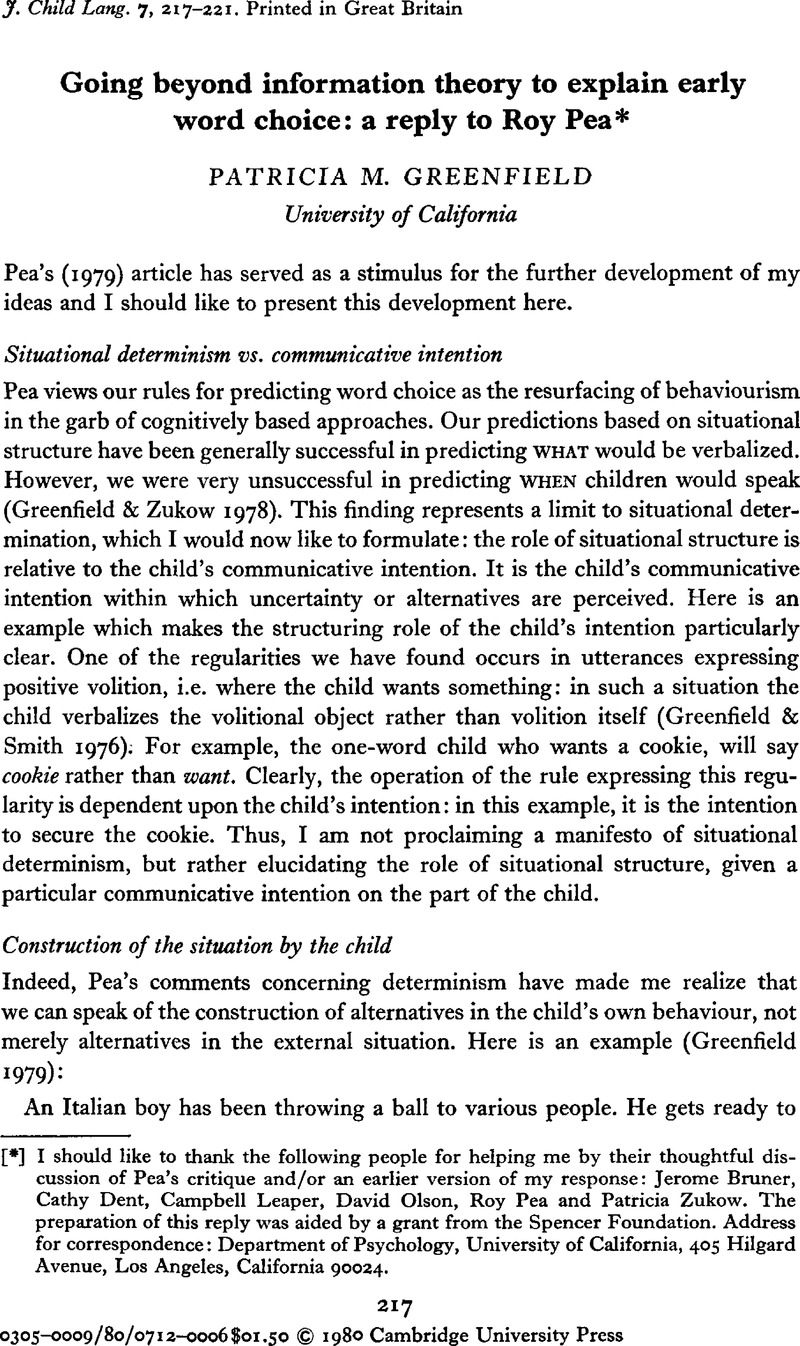Crossref Citations
This article has been cited by the following publications. This list is generated based on data provided by Crossref.
Schwartz, Richard G.
1983.
The role of action in early lexical acquisition.
First Language,
Vol. 4,
Issue. 10,
p.
5.
Ninio, Anat
1992.
The relation of children's single word utterances to single word utterances in the input.
Journal of Child Language,
Vol. 19,
Issue. 1,
p.
87.
Cloud, Steven J.
and
Muma, John R.
1999.
Challenges for Higher Education: Teaching the Cognitive Social Bases of Language.
Perspectives on Issues in Higher Education,
Vol. 3,
Issue. 2,
p.
3.
Bannard, Colin
Rosner, Marla
and
Matthews, Danielle
2017.
What’s Worth Talking About? Information Theory Reveals How Children Balance Informativeness and Ease of Production.
Psychological Science,
Vol. 28,
Issue. 7,
p.
954.
Grigoroglou, Myrto
and
Papafragou, Anna
2019.
Children's (and Adults') Production Adjustments to Generic and Particular Listener Needs.
Cognitive Science,
Vol. 43,
Issue. 10,



